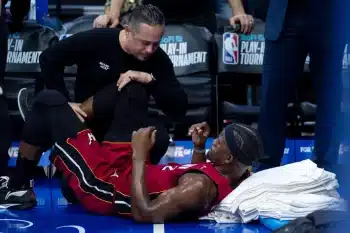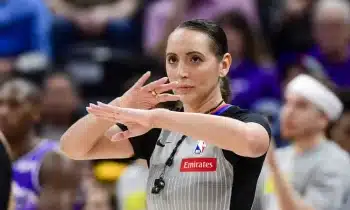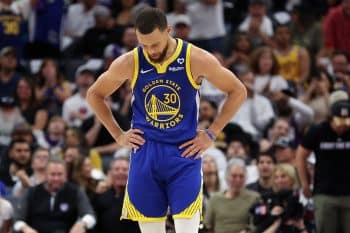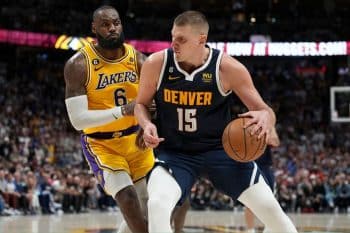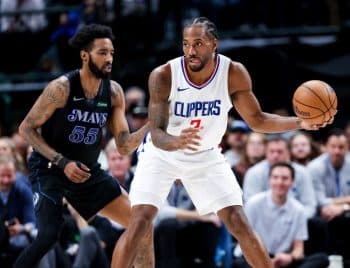NBA
Atkinson Draws From Past to Energize Nets

When Kenny Atkinson finished up his professional playing career, it was quickly apparent he’d remain in the game on the management side. He served as Director of Player Development for the Houston Rockets during the 2007-08 season, reporting to some young hotshot general manager named Daryl Morey fresh into his first season at the helm. Atkinson moved to the coaching side the following year as an assistant with the New York Knicks. He was once again under a first-year boss – this time Mike D’Antoni, who came aboard in New York the same year. After four seasons in the Big Apple, Atkinson joined the Atlanta Hawks’ coaching staff, and within a couple years he’d become acquainted with Mike Budenholzer.
As Atkinson crosses the 10-game threshold in his first gig as an NBA head coach with the Brooklyn Nets, it’s clear he hasn’t forgotten his past. In fact, he’s using it as a template.
Atkinson’s Nets drew about as little fanfare as a modern NBA team can manage prior to this season. They lacked the on-paper skill to even think about qualifying for the playoffs, and shortsighted moves from a previous regime cut off any potential draft-related excitement at the knees. This was expected to be a mostly boring collection of players who’d generally stand around and watch Brook Lopez post up (until he got hurt or traded), struggle to defend and ultimately leave little lasting impression on anyone before forking over a likely top-five pick to the Boston Celtics.
However, that hasn’t been the case thus far.
Through roughly an eighth of the season, Atkinson has this group playing, well, real basketball. They sit 18th in the league in per-possession net scoring, despite having the seventh-toughest schedule in the league to this point and already missing Lopez and Jeremy Lin for a couple early games. They’ve beaten playoff teams from last year – the Indiana Pacers and Detroit Pistons – and have thrown real scares into potential East contenders such as the Boston Celtics and Charlotte Hornets. And they’ve done it all with some key assists from Atkinson’s past mentors.
Budenholzer’s Hawks embraced their star-less identity from the jump with a cohesive, movement-based system designed to maximize specific skills and create creases in the defense. Atkinson’s Nets are operating under similarly inclusive principles: Six guys are taking at least seven shots a night, and five different Nets in the rotation are using over the league average of 20 percent of team possessions while on the floor. No one on the team is over Bojan Bogdanović’s 28.3 minutes per game.
Systems-wise, Atkinson is drawing from Budenholzer as well – but with a very D’Antoni-esque flair. The Nets use a ton of off-ball movement and screening, much of which is generally unscripted aside from a few basic tenets. Ball-handlers like Lin, Bogdanović and early standout Sean Kilpatrick have a ton of freedom to read the defense, and the unpredictable nature of the offense has helped close skill gaps in more than one game already this year.
This is where a few cherry-picked D’Antoni themes are visible. Atkinson knows his team is trotting out with a talent disadvantage most nights, so he wants his offense picking every bit of low-hanging fruit available to (somewhat) even the playing field. The Nets are playing at the second-fastest offensive pace in the league, per inpredictable.com, pushing any little edge in transition and looking for early chances to catch the defense off guard. They’re attempting the fourth-highest percentage in the NBA of shots “early” in the shot clock, per NBA.com SportVU figures (15-18 seconds), and the 10th-highest percentage of “very early” shots (18-22 seconds).
Lopez – suddenly a three-point gunner who matched his entire career attempt total from deep by his seventh game of the year – is setting drag screens as soon as the ball crosses halfcourt, and has full license from Atkinson to fire away early in the clock if guys leave him:
Lean too far expecting the drag screen, Cody Zeller? No matter, Lopez just won’t bother to set it.
He’s only hitting about a third of them, but Lopez’s range is opening things up for the entire offense. The Nets generated 15 open or wide open threes per game last season (no defender within four feet); they’ve more than doubled that so far this year, and lead the entire league in these attempts by a decent margin.
Individually, Lopez has never looked more comfortable on the floor. The freedom Atkinson has given him with his three-point shot is clearly rubbing off elsewhere. Lopez is decimals from the highest percentage at the rim he’s shot in his career, and his entire shooting profile from within 10 feet has actually improved markedly thus far even as he steps outside way more often.
A conservative defensive scheme against most pick-and-rolls has Lopez perfectly cast as a last line of defense at the rim. He’s posting easily his best season here since SportVU began tracking contested rim attempts (excepting a 17-game small-sample outlier in 2013-14): The 39.1 percent opponents are shooting at the rim while Lopez is nearby ranks fourth-stingiest among 53 guys defending at least five per game, mere points behind Hassan Whiteside and actually decimals ahead of Rudy Gobert.
Plenty of guys give you more when they’re having fun on the court, and the effect has been visibly apparent with Lopez. Watch him closely throughout this entire set that leads to another open three: This isn’t free-flowing offense that happens to get an acceptable shooter a look late in the shot clock – this is designed for Lopez. How could any seven-footer not enjoy plays like this drawn up for him?
From a philosophical standpoint, though, Atkinson’s overhaul in Brooklyn is straight out of the Morey Handbook For Team-Building. The Nets are pushing the analytical envelope with their offensive approach: Trying fewer mid-range shots than anyone but Morey’s Rockets (they’re hitting theirs at a much higher rate than Houston), and trailing only the vaunted Cavaliers in corner three-point attempts and only the Rockets again in above-the-break attempts.
No team has attempted more spot-up field goals, per Synergy Sports data, generally a sign of a healthy offense generating productive shots. The Nets finished a play from the post on 10 percent of their possessions last year, one of the five highest rates in the league; they’re down under seven percent for this year, now in the league’s bottom half. This is a clear philosophy from Atkinson, and it’s helping the Nets stick with teams they don’t match up well against on paper.
There’s no doubt that the Nets will still lose plenty of games this year. The talent gap is real on most nights, and it could grow in a hurry if Lopez is dealt before the deadline to help restock the barren draft cupboard left by the last administration. At some point, good defenses are going to figure out how to better snuff out depth options like Yogi Ferrell, Justin Hamilton and Joe Harris.
What Atkinson has done so far borders on remarkable, though. Even with his only two true starter-level players in Lopez and Lin in and out of the lineup, Atkinson has kept the group competitive on a nightly basis. He’s helped resurrect Kilpatrick’s career, a process that began under the previous regime last season but has been allowed to fully blossom with more freedom and trust.
Atkinson will find more confidence in the details as time wears on. This is just a promising start to a very long game. His foundation is built on principles from some of the most respected minds in the game, and it’s taken hold quicker than anyone could have expected. Prepare yourselves for a world where the Nets might be fun again.
